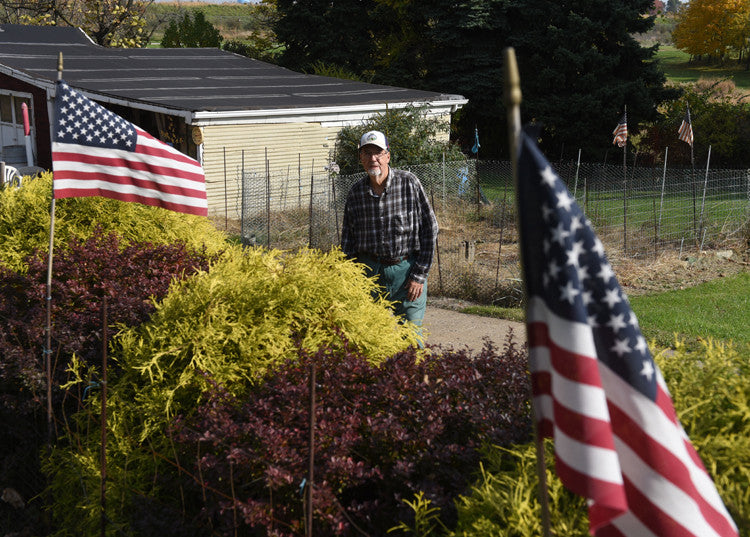A very interesting story!
Dan Cummings was grounds supervisor at CCAC South Campus starting in the 1970s, where he befriended Joe Roberts, who enjoyed walking at the school.
“He commented on how nice I keep up the place and asked me if I would stop over to his house to give him some pointers,” says Cummings of West Mifflin.

Cummings, 75, helped Roberts with some pruning tips and then was astounded to see a huge tomato hanging from one of the deep-green plants. “I said, ‘Holy smokes, Joe, that sucker is a monster,’” Cummings says.
Roberts then told him the plant’s astonishing origin story.
“He was in World War II and was going across a battlefield. There was this whole field of tomatoes,” Cummings says.
Roberts and couple of other guys from his unit started picking the fresh fruit. “They were eating them like they were going out of style,” Cummings says. Roberts was so impressed with the size and flavor of the tomato, he saved a few seeds to bring back to the States when he was discharged from the service.

The tomato’s name has changed several times. First, because one slice of the tomato was enough to cover an entire slice of bread, Roberts named it ‘Sandwich.’ He then settled on ‘Sweetheart’ for a few years.
“In the ’90s I said to him, ‘World War II started in 1939, and it was over in ’45. Why don’t you just change the name to 3945?’ That’s how we came up with the name,” Cummings says.
Over the years, the story has faded. Roberts passed away around 2003, and Cummings can’t remember where exactly Roberts found the tomato or what branch of the service he served in. But he shares the seeds and story with any gardener interested. “It’s in memory of him and all the servicemen who fought from WWII,” Cummings says of the tomato, which he started growing in the 1980s.
These days after church, Cummings has coffee with friends at the local Panera Bread, where he’ll pass out some seeds. Some of his pals grow the tomatoes and bring the seedlings to the breakfast meeting in the spring to hand out for planting.
The giant tomatoes are a reddish orange with a texture that’s both meaty and juicy, with lots of tiny seeds and a wonderful old-fashioned flavor.

“When I plant the tomatoes, I usually make a sign of the cross, bless them and ask the good Lord to make them grow so I can share them with everybody,” he says.
He stresses that the plant needs a big cage at least
3 feet around and 6 feet tall anchored in the ground with a long piece of rebar. “A few years back I picked one that weighed 4 pounds,” Cummings says. “I gave it to our priest down at Holy Angels Church in Hays.”
As he slowly walks up his driveway, a friend beeps a horn, Cummings waves and then reflects on the patriotic decorations that fill the garden and why he’s kept this historic tomato alive for all these years.
“I fly a flag every day in my yard in memory of those who fought and died for us,” he says proudly. “Can you imagine a unit of soldiers going across a battlefield and seeing a field of tomatoes? They took time out from protecting themselves to stop and eat some tomatoes and then to bring the seeds home and to grow them. It’s just mind-boggling.”

